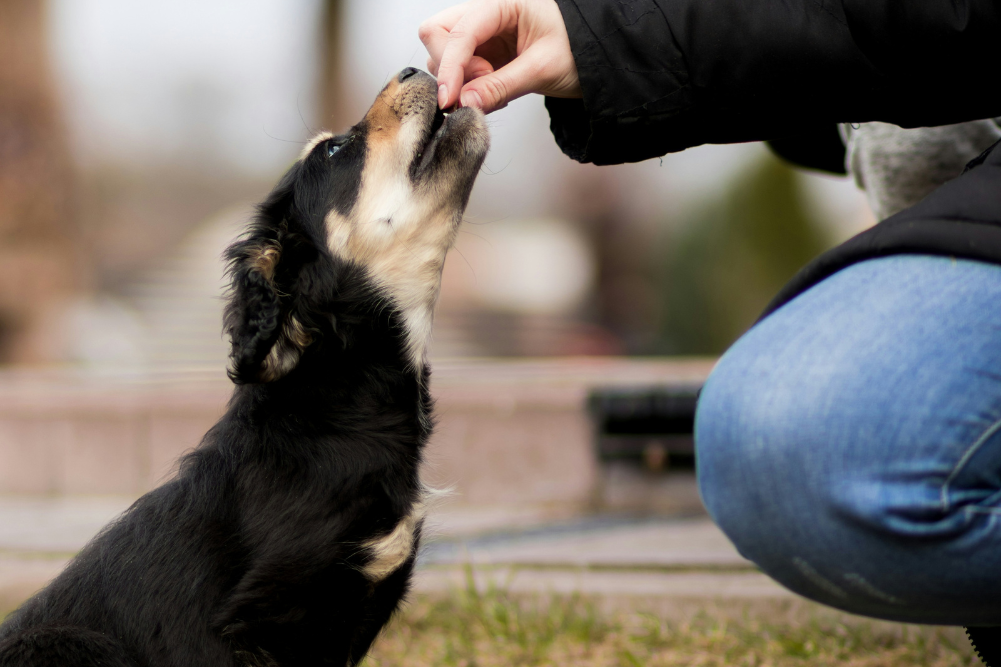Can my dog eat this?
“Can my dog eat this?” Is the one topic that always comes up when discussing home prepared diets for dogs. As I list the forbidden foods, I have to confess that my Labrador has tried all of these, to no ill effect … so far. So I thought I’d look into this, in no particular order, to find out how bad they really are.
Onions and garlic (and all the allium species, including chives and leeks)
Garlic is used traditionally to treat cancer, infections, and vascular problems. The main active ingredient is allicin, produced when crushing the clove. The resulting sulphur compounds are responsible for toxic effects seen in dogs. Oxidative damage to red blood cells leads to anaemia, which can be fatal, and I’ve seen a small dog require a blood transfusion due to chronic garlic ingestion. Cooking or drying garlic doesn’t reduce the risk. The precise toxic dose is unknown. Some breeds of dog (Akitas or Shiba Inu, and cats) may be more susceptible.
However, garlic can have some health benefits, including cancer care, treating respiratory infection, hyperlipidosis and thrombosis in small animals. Anecdotally we have used one small clove per 25kg dog safely. Speak to your vet first, and it may be worth regular monitoring of red blood cells if you do use garlic medicinally.
Chocolate
Theobromine (a methylxanthine) occurs in cacao seeds and therefore in chocolate. Chocolate ingestion in dogs is one of the most common toxicities we see in veterinary medicine. Dark cooking chocolate contains the highest concentration of theobromine, while white chocolate contains very little. There are online chocolate toxicity calculators for guidance, but if your dog has eaten any form of chocolate, it’s best to contact your vet.
Signs can begin within hours, and can include restlessness, increased thirst, hyperthermia, tachycardia, muscle tremors and seizures. Some breeds, including the Irish Wolfhound and Beagle, may have a deficiency in the CYP1A2 enzyme which may increase their risk. I don’t recommend chocolate for any dogs.
Tea, coffee and guarana
These foods all contain caffeine, which is another methylxanthine that can be toxic in high doses. When preparing green tea for dogs (used for its antioxidant effects), I’ll discard the first two minutes of the hot water extract in order to reduce caffeine ingestion.
Avocado
There is an avocado tree in the local park and if I’m not quick, my dog can ingest a whole fruit, leaving the pit. Ingestion of a whole avocado has been associated with myocardial damage and mastitis in mammals and birds, but dogs may be resistant. Avocadoes contain beneficial vitamins, fatty acids and antioxidants, but the high fat content can cause gut upset or pancreatitis in susceptible dogs. Avocado pits can also cause a gut obstruction.
Apple seeds
I confess I often share my apple with my dog. Apple seeds, like many fruit seeds, contain a compound called amygdalin, which when crushed is broken down into cyanide. If your dog ingests and crushes enough apple seeds, they may develop cyanide toxicity. Although the exact number of apple seeds to be ingested isn’t known, one estimate is that your dog would have to crush the equivalent of all the seeds of 200 apples to become toxic. I doubt my dog chews the seeds, but it makes sense to avoid apple seeds if your dog has gut or liver issues, or is otherwise unwell. I feel comfortable feeding my dog apple cores, but perhaps ask your local vet for advice.
Grapes (as well as currents, sultanas and raisins)
Ingestion of grapes or their dried fruits have resulted in acute renal failure in some dogs, which can be fatal. The susceptibility to grape toxicity seems to vary, and since the exact mechanism is not understood, there’s no way to pick which dogs may be more at risk. Various studies have shown a wide range in the amount of fruit ingested that can be toxic, (many of those studies involve ingestion by Labradors). One theory is that the toxicity may be associated with ingestion of pesticides or fungicides on the grapes.
Grape seed extract can be used for its astringent, diuretic and anti-inflammatory effects. Studies have shown that products containing grape-seed and blueberry extract given to dogs did not result in renal toxicity. My best advice is to keep grapes and raisins safe from your dog, and speak to your vet before giving grape-seed extract.
Macadamia nuts
Macadamia nuts are low in cholesterol and salt, and are a good source of manganese and thiamine, however toxic effects have been described in dogs. The clinical symptoms include weakness, incoordination, lethargy, difficulty walking, vomiting and high temperatures, and these symptoms may occur after ingestion of as few as 7g for a 10kg dog. Dogs that ingest macadamia nuts do recover, but I recommend other nuts for dogs. For example, a very small serve of raw Brazil nuts or almonds.
There are other foods to avoid: cooked bones in all forms, raw poultry bones (which may be associated with an immune neuropathy in a small number of dogs), mouldy foods, foods containing xylitol, and rising bread dough containing yeast. Most foods you eat are OK for your dog. However, for a balanced approach to feeding, seek the advice of a vet experienced in real food diets for dogs.








